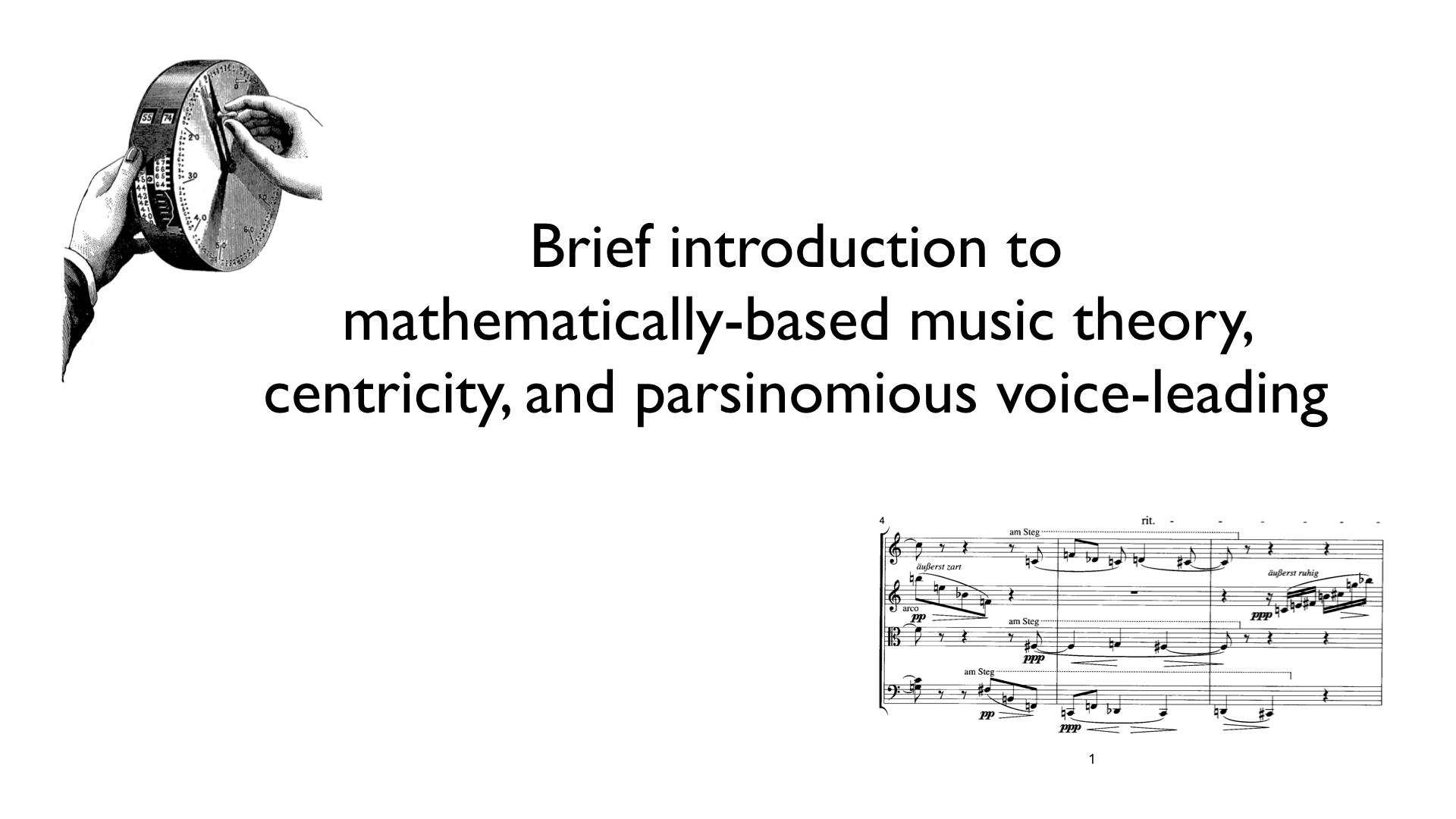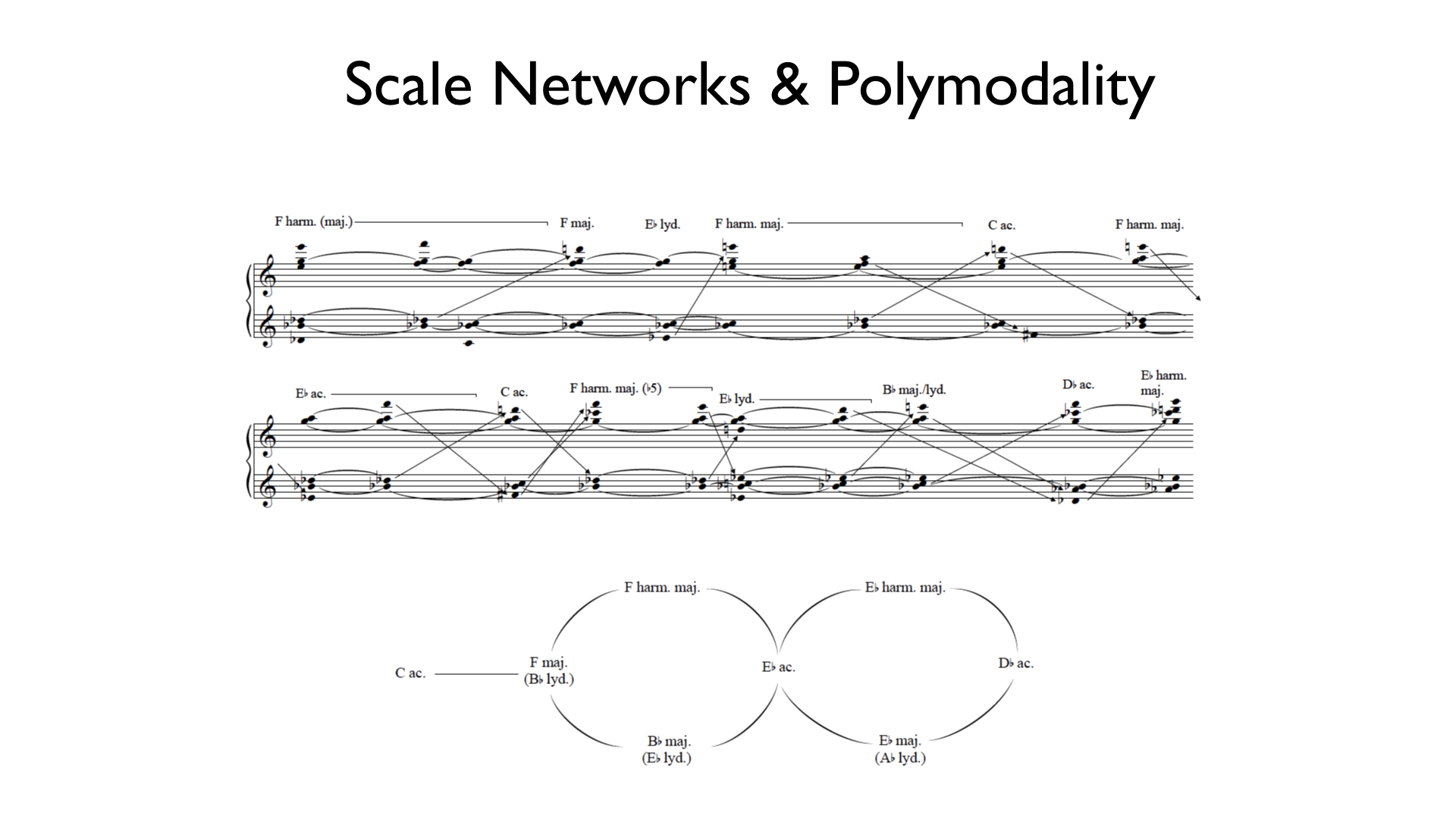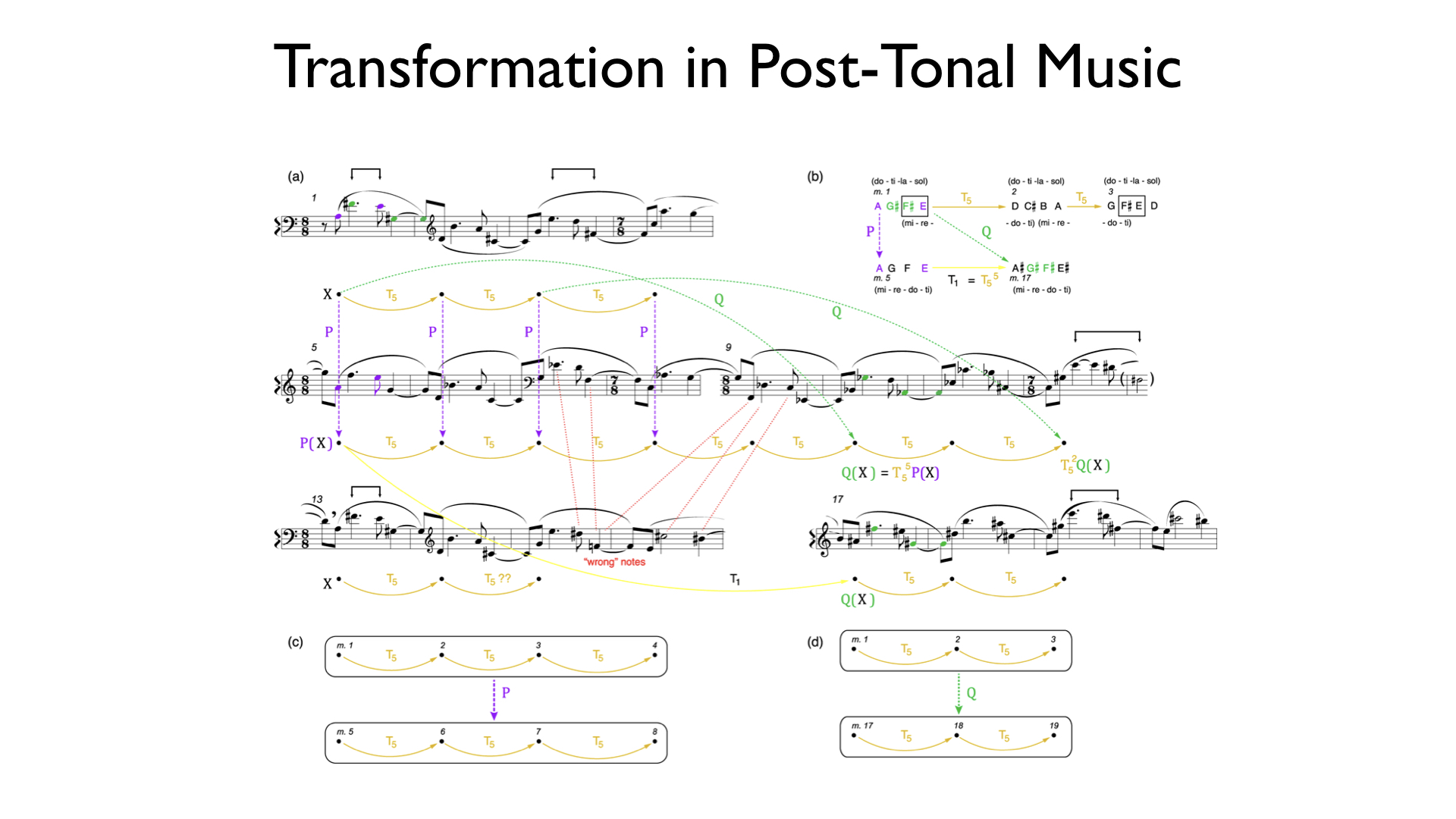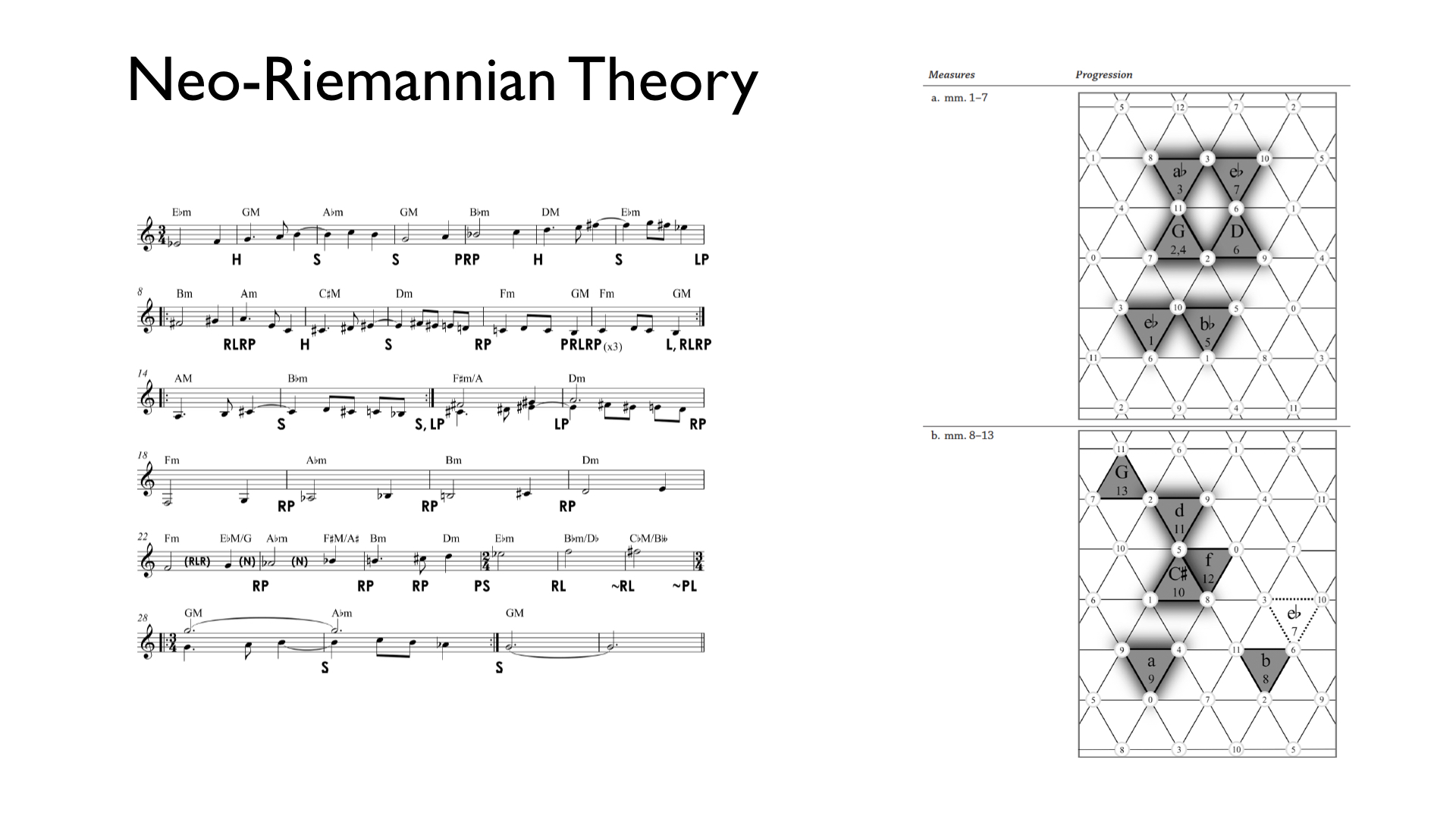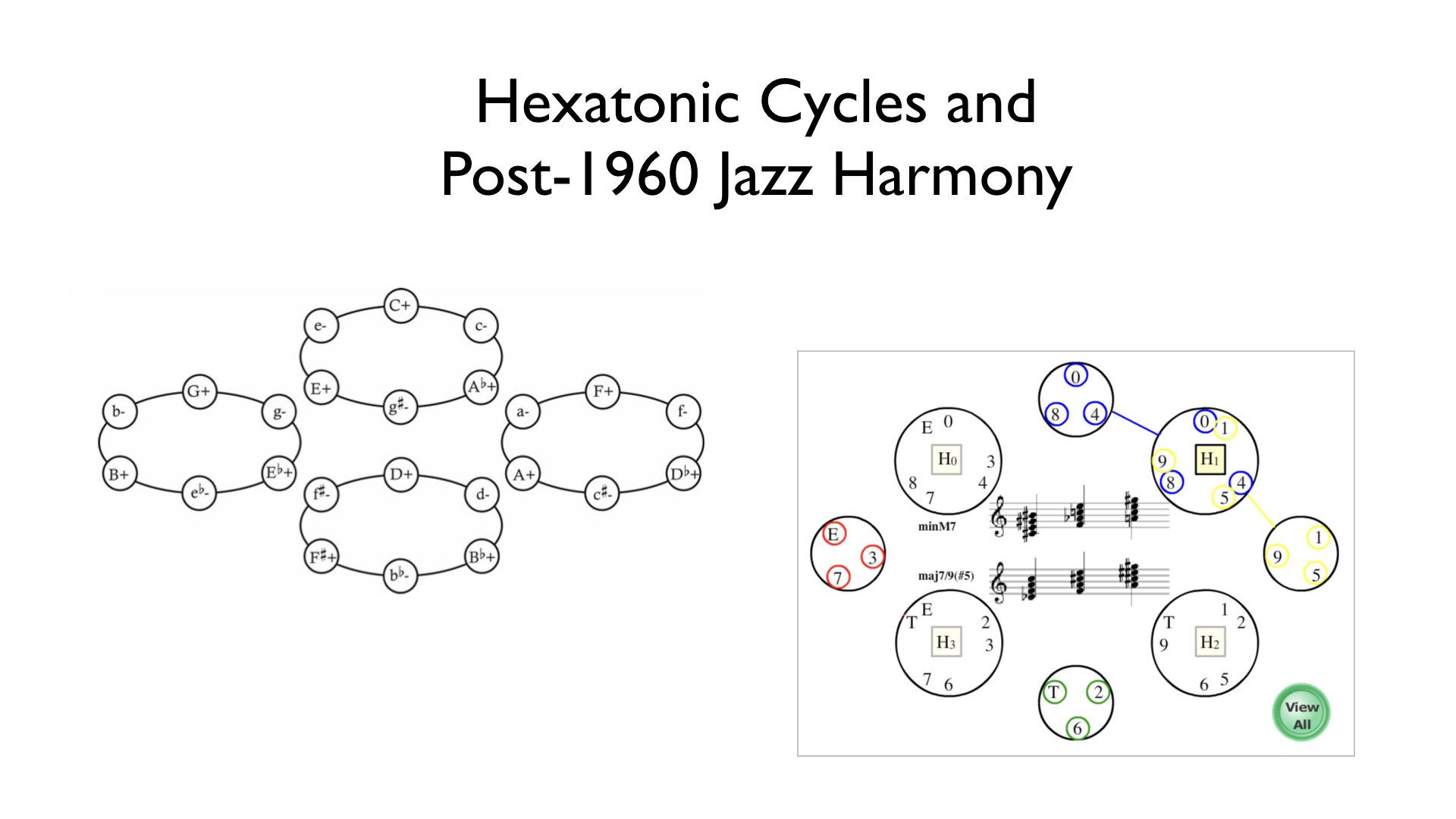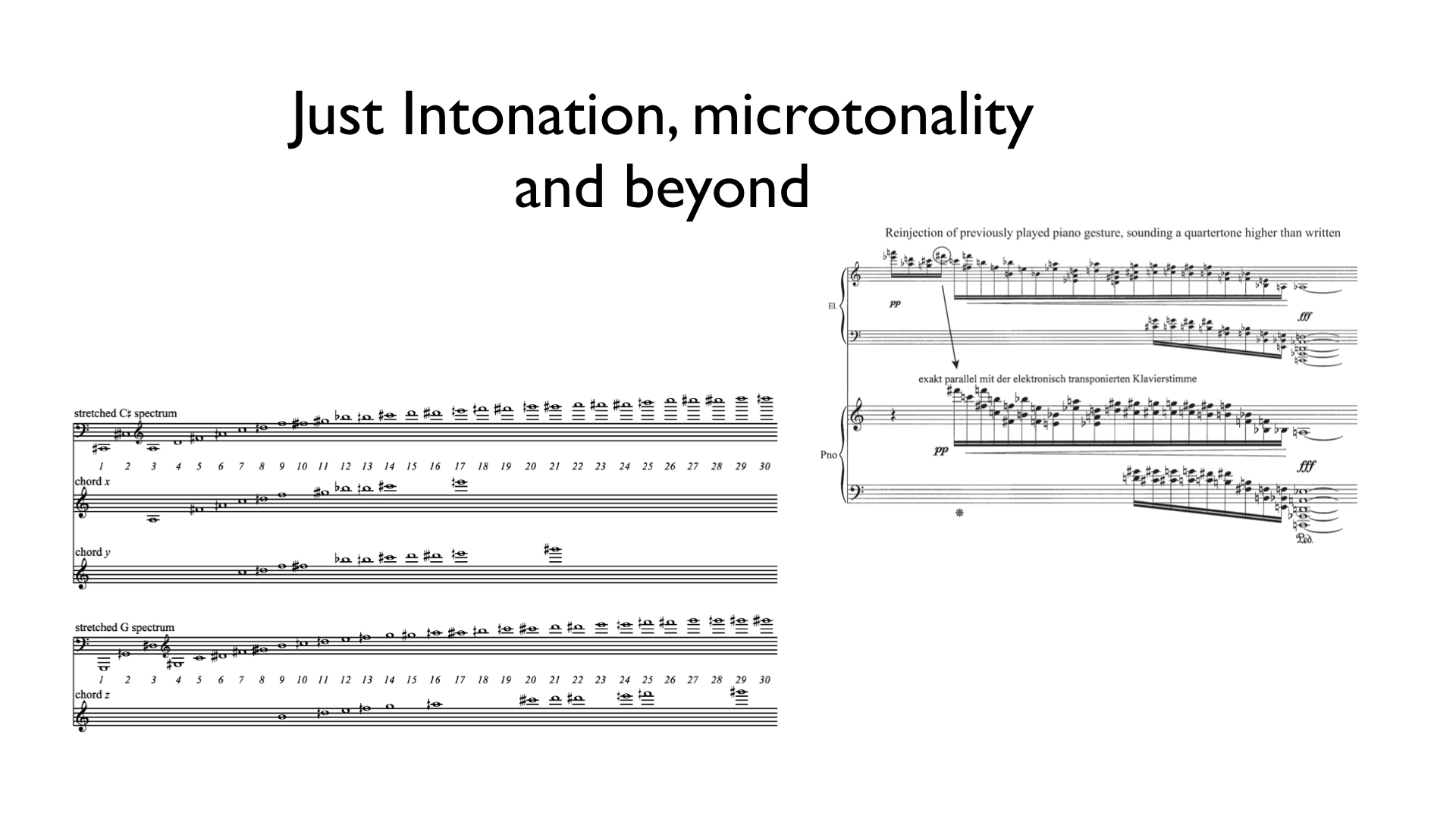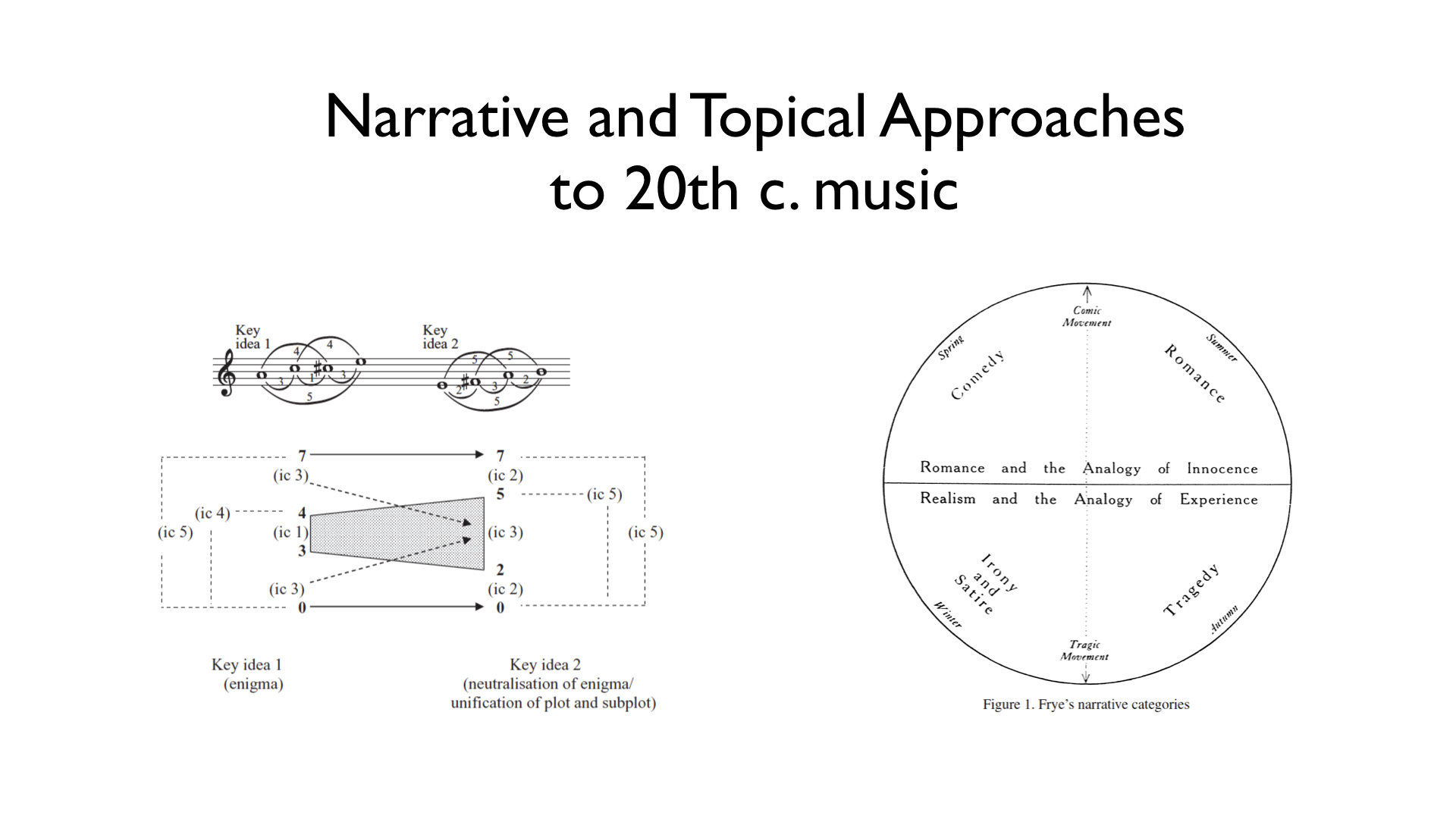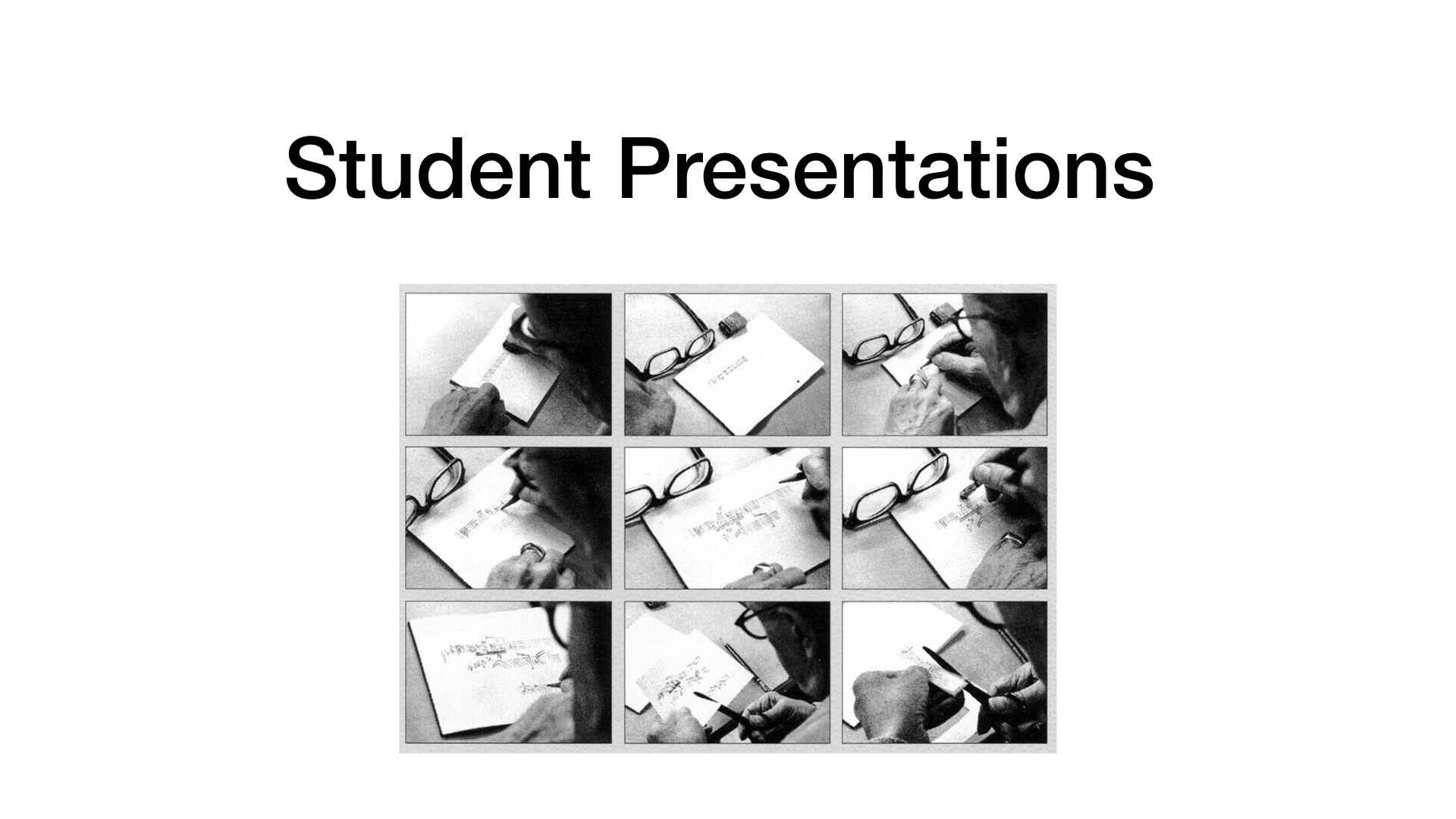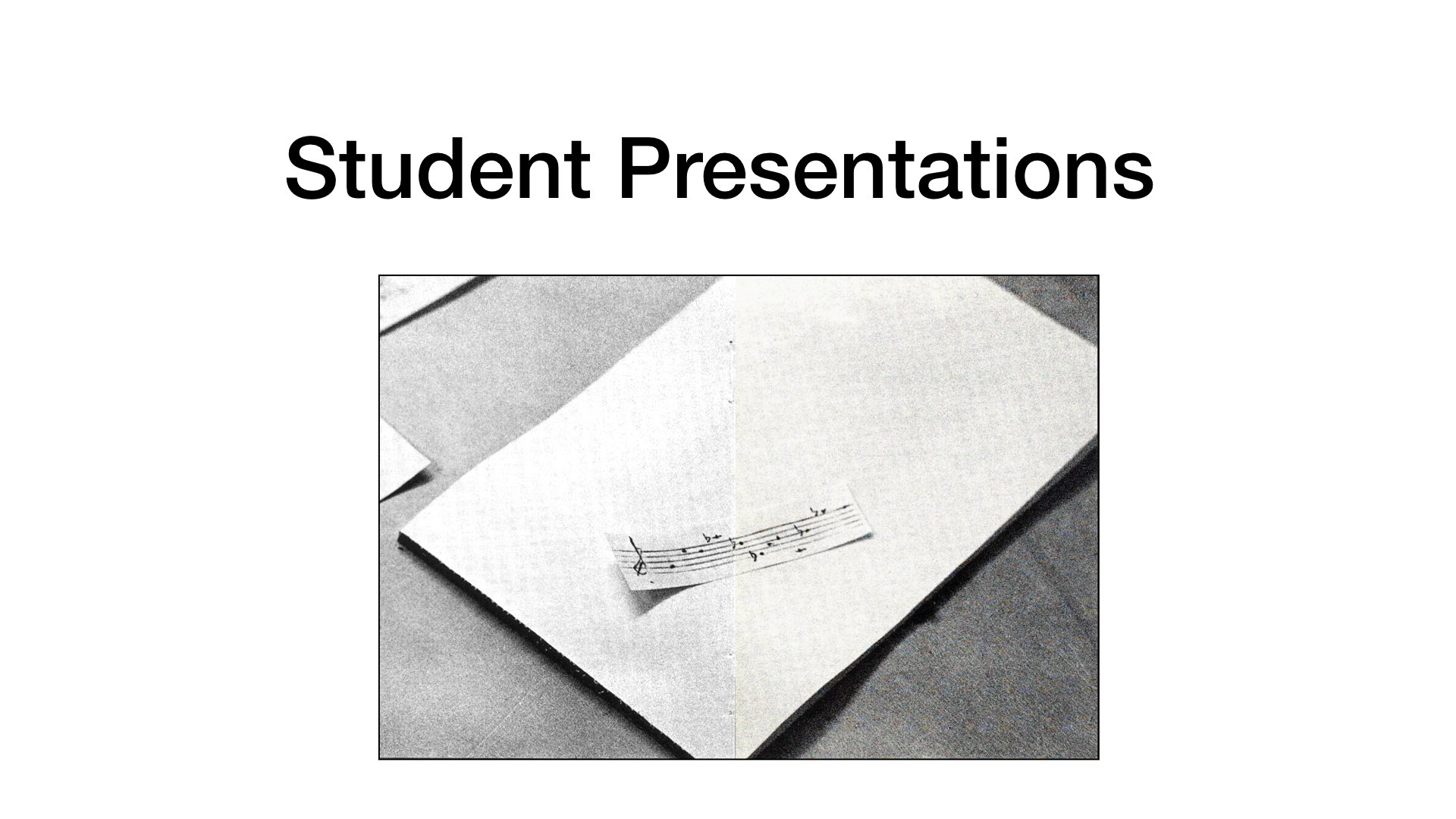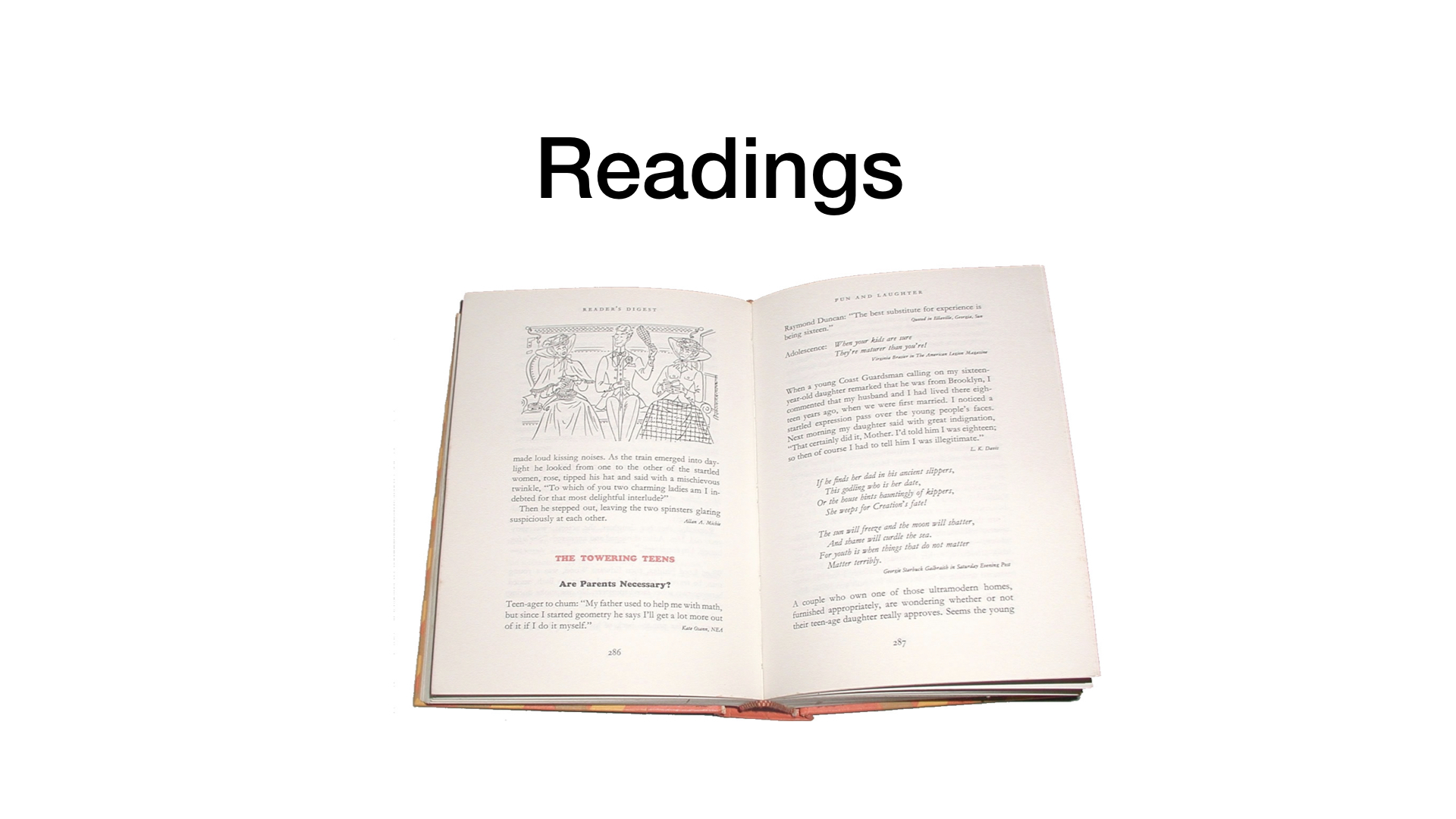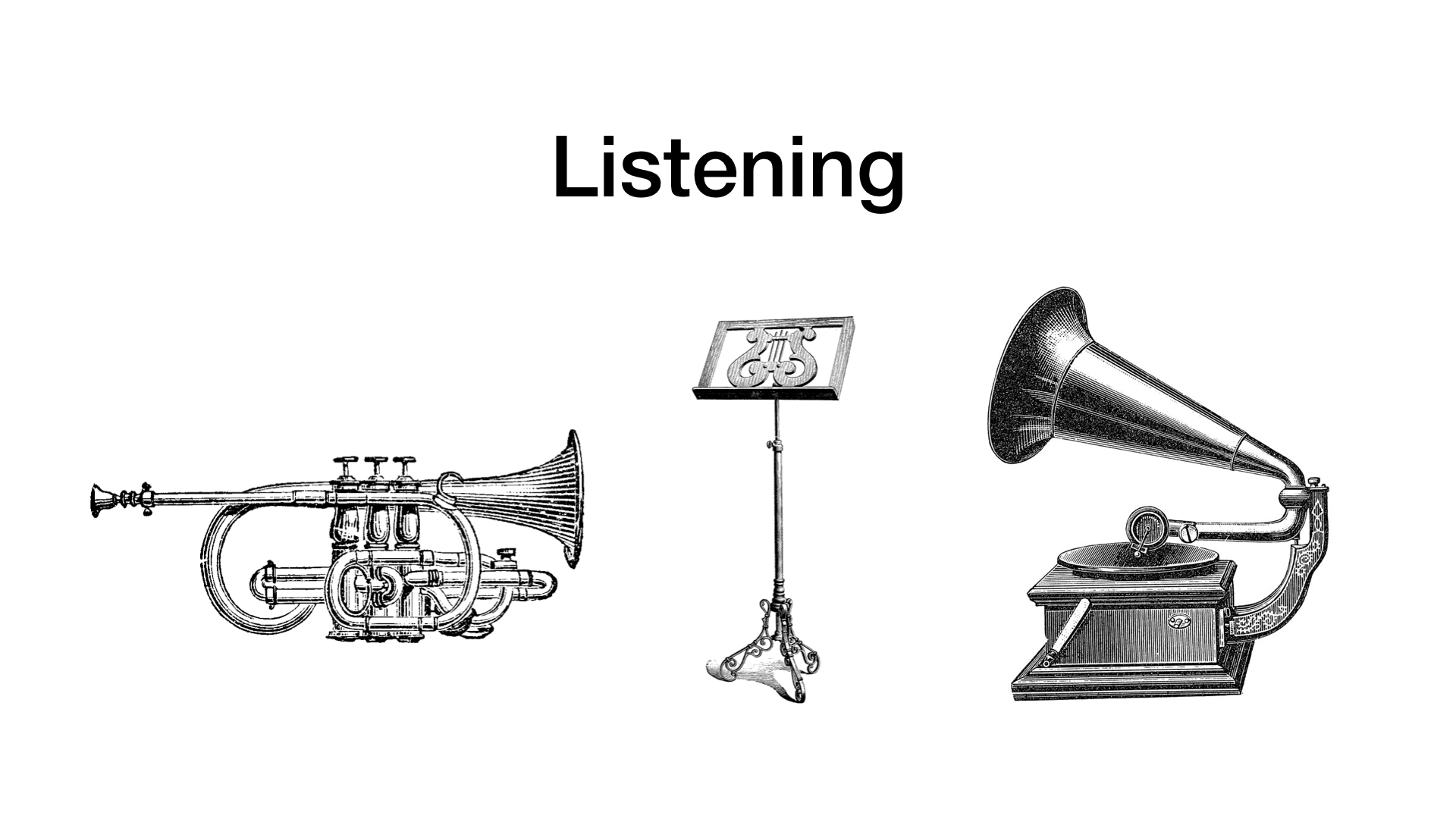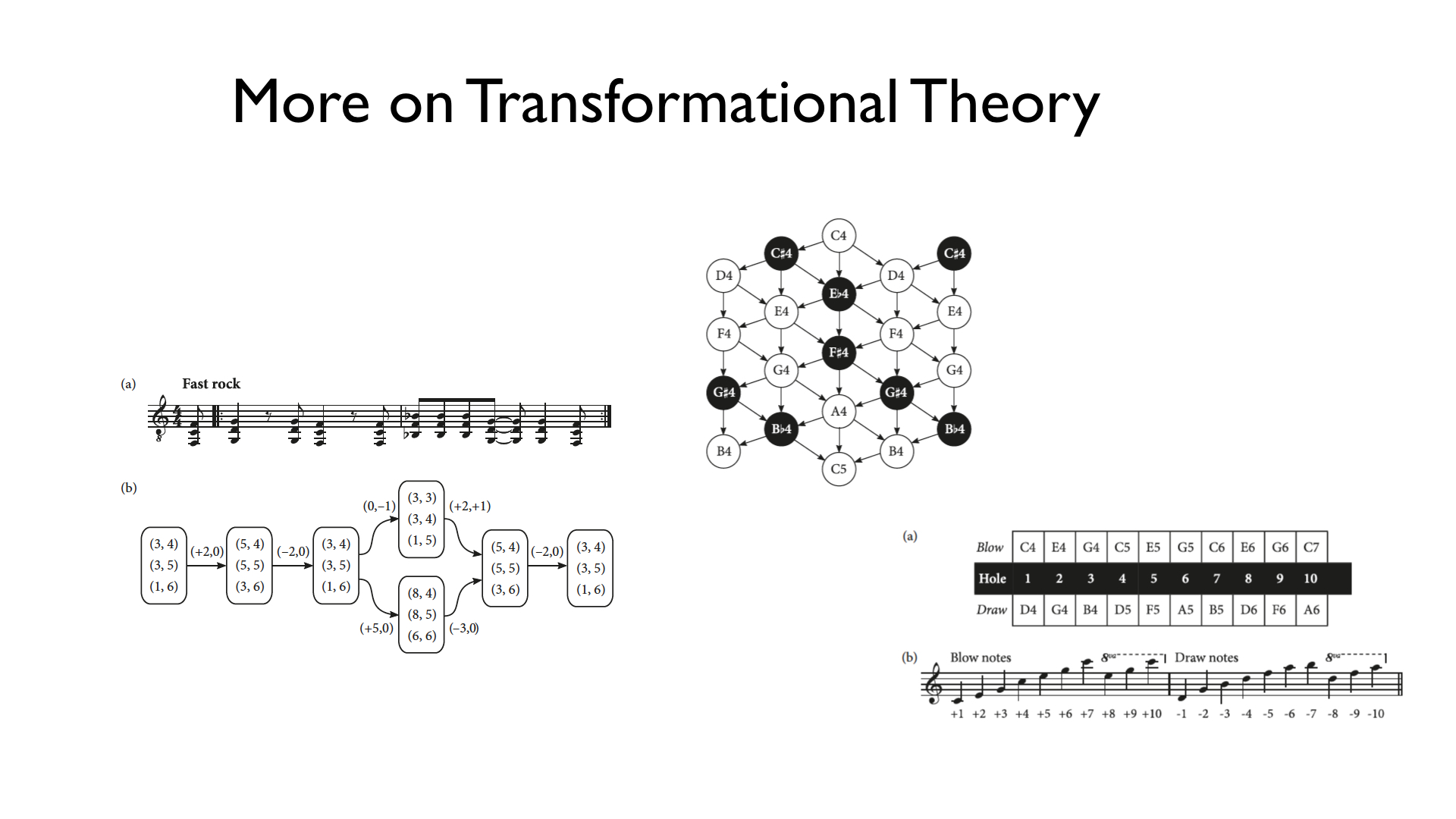
Readings
Matthew Santa, "Defining Modular Transformations," Music Theory Spectrum 21:2 (1999): 200–29. Mappings to and from chromatic (mod12), octatonic (mod8), diatonic (mod7), whole-tone (mod6), and pentatonic (mod5) modular spaces in Bartók, Debussy, Stravinsky, and Schoenberg.
Jonathan De Souza, Music at Hand: Instruments, Bodies, Cognition (Oxford: Oxford University Press, 2017).
Idiomaticsy and Instrumental Spaces, pp. 55–63.
Kurt Rosenwinkel's Retuned Guitar, pp. 88–97.
Instrumental affordances and embodied transformations.
Videos for De Souza readings
Assignment 3
Analysis of Bartók, "Chromatic Invention I," Mikrokosmos No. 91 Assignment posted on canvas or download it here as a Word doc; due May 4
Audio
Excerpts for Class 4 and Assignment 3
Readings Class 5:
Frank Lehman, "Neo-Riemannian Theory at the Movies,“ from Hollywood Harmony: Musical Wonder and the Sound of Cinema (Oxford University Press, 2018).
Daniel Harrison, “Remarks on Fantasia on a Theme by Thomas Tallis by Ralph Vaughan Williams,” from “Three Short Essays on Neo-Riemannian Theory,” in The Oxford Handbook of Neo-Riemannian Music Theories (Oxford University Press, 2011), 564–77.
Supplemental Readings:
Richard Cohn, "Neo-Riemannian Operations, Parsimonious Trichords, and Their "Tonnetz" Representations," Journal of Music Theory 41/1 (1997), 1–66. Richard Cohn, "Introduction to Neo-Riemannian Theory: A Survey and a Historical Perspective," Journal of Music Theory 42/2 (1998), 167–80. John Roeder and Scott Alexander Cook, "Triadic Transformation and Parsimonious Voice Leading in Some Interesting Passages by Gavin Bryars," Intégral 20 (2006), 43-67.
